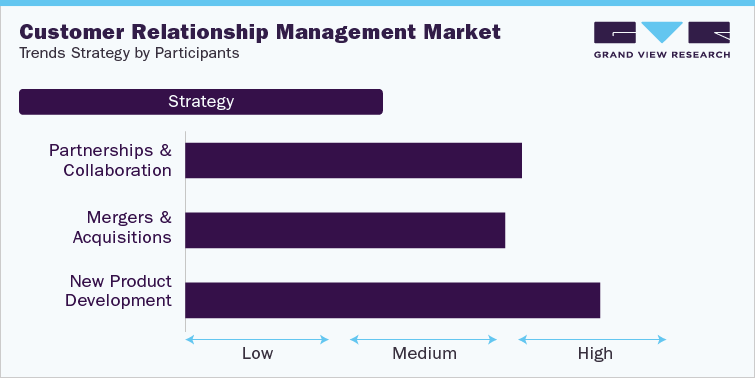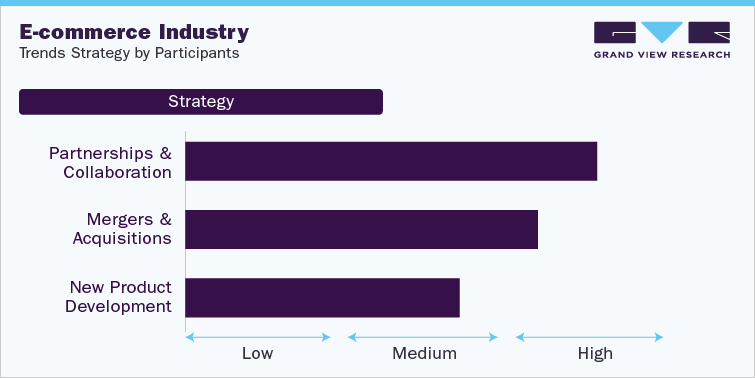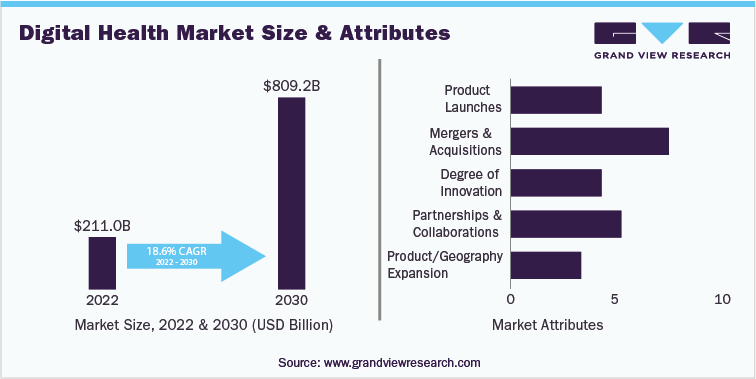
Customer relationship management industry data book covers customer experience management, customer self-service software, digital experience platform, sales force automation software, sales training software, marketing automation market.
Global customer relationship management industry databook is a collection of market sizing information & forecasts, competitive benchmarking analyses, macro-environmental analyses, and regulatory & technological framework studies. Within the purview of the database, all such information is systematically analyzed and provided in the form of presentations and detailed outlook reports on individual areas of research.
Access the Global Customer Relationship Management Industry Data Book from 2023 to 2030, compiled with details by Grand View Research
Customer Experience Management Market Insights
The global customer experience management market size was valued at USD 10.65 billion in 2022 and is expected to grow at a compound annual growth rate (CAGR) of 15.4% from 2023 to 2030. Customer experience management solutions are gaining widespread popularity in diverse industries. As businesses become more customer-centric, the customer experience management (CEM) market is expected to witness rapid growth in the forecast period. Ongoing trends such as hyper-personalization of customer service, the use of AI and automation, and various customer value models are the key attributes propelling the growth of the segment. Moreover, implementing robust social media customer service can help reduce costs, increase response times, improve customer satisfaction, and increase the adoption of customer experience management platforms across industries.
Customer Self-service Software Market Insights
The global customer self-service software market size was valued at USD 11.92 billion in 2022 and is expected to expand at a compound annual growth rate (CAGR) of 23.5% from 2023 to 2030. It is anticipated to register a compound annual growth rate (CAGR) of 22.1% from 2020 to 2027. Efforts to enhance the level of customer satisfaction and encourage customer loyalty are anticipated to propel the market growth over the forecast period. The continued rollout of a large number of customer service touchpoints is also expected to contribute to market growth.Enterprises have realized that understanding the changing consumer behavior can help them in enhancing their offerings. At the same time, both small and medium-sized enterprises and large enterprises have started adopting automated customer self-service software.
Digital Experience Platform Market insights
The global digital experience platform market size was valued at USD 11.17 billion in 2022 and is expected to expand at a compound annual growth rate (CAGR) of 13.7% from 2023 to 2030. Incumbents of several industries and verticals have started using a customer-centric approach to deal with real-time customer data. Digital experience platforms (DXP) can help these industries in achieving a holistic view of activities, customer interactions, and data across multiple applications and touchpoints. Digital experiences offered by the companies also contain the potential to enhance customer engagement and increase operational productivity in the long run. As these, enterprises prioritize various components of digital experience to attract tech-savvy and self-educating customers. These factors would further supplement the growth of the digital experience platform industry.
Order your copy of the Free Sample of “Customer Relationship Management Industry Data Book - Customer Experience Management, Customer Self-service Software, Digital Experience Platform, Sales force Automation Software, Sales Training Software, Marketing Automation Market Size, Share, Trends Analysis, And Segment Forecasts, 2023 - 2030” Data Book, published by Grand View Research
Sales force Automation Software Market Insights
The global sales force automation software market size was valued at USD 9.82 billion in 2022 and is expected to grow at a compound annual growth rate (CAGR) of 14.6% from 2023 to 2030. The growing adoption of cloud technologies for sales force automation and rising demand for sales forecasting applications are the primary drivers of the sales force automation software market. Further, the adoption of Customer Relationship Management (CRM) software is gaining traction in various industries owing to the changing nature of the software in terms of functionalities and feature sets. Futuristic CRM suites also enable enterprises to gauge business performance and track sales trajectories. Moreover, the increasing adoption of digital transformation across several industry verticals is causing organizations to replace the previous array of solutions required to build, administer, and enhance their digital presence with a unified solution that can serve all functions. These factors would further drive the market during the forecast period.
Sales Training Software Market Insights
The global sales training software market size was valued at USD 2.14 billion in 2022 and is expected to grow at a compound annual growth rate (CAGR) of 14.3% from 2023 to 2030. The industry growth can be attributed to the paradigm shift in the focus of the incumbents of various end-use industries to reduce the time employees spend on repetitive tasks and devote the time saved to other customer engagement and relationship management activities. The sales training software can particularly help end-use enterprises in improving employee productivity, boosting product sales, and utilizing resources efficiently. Benefits associated with the adoption of such software include easy sales content creation and streamlined sales enablement.
Go through the table of content of Customer Relationship Management Industry Data Book to get a better understanding of the Coverage & Scope of the study.
Marketing Automation Market Insights
The global marketing automation market size was valued at USD 5.72 billion in 2022 and is expected to witness a CAGR of 13.2% from 2023 to 2030. Owing to the rising significance of automation solutions in marketing and sales to increase revenue and average deal size, target customers across multiple channels, and retain customers, the market will witness healthy growth. Moreover, the marketing automation solutions help automate repetitive, monotonous tasks such as emails, social media, and other website functions. Technological advancements, such as Artificial Intelligence (AI) and data science, the use of analytics in marketing and sales is also likely to boost the growth prospects of the market over the forecast period. A recent survey suggests that there were around 3.9 billion email users and about 3.5 billion social media users in 2019. Email marketing is still one of the primary channels of marketing, wherein the scope of automation in the segment will remain highly effective. Generally, email marketing involves sending newsletters, solicit sales, request donations, advertisements, and request businesses via emails.
Key players operating in the Customer Relationship Management industry are –
• Adobe Inc.
• IBM Corporation
• Salesforce.com, Inc.
• Sitecore

